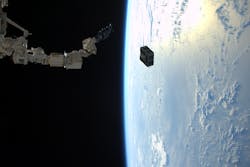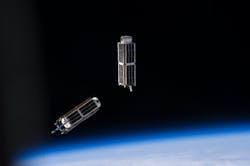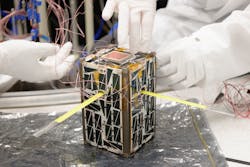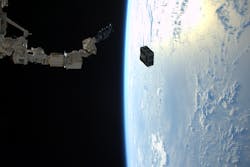3D Printing Technology to Pioneer Manufacturing in Space
Over the last few years new innovations have turned up that are starting to make space monetarily accessible to more people. In 2015, NASA awarded venture class launch service (VCLS) contracts for a new type of satellite. Coined Cubesat, a 10-cm cube is filled with whatever innovative technologies or experiments a scientist could dream. This makes sure no space is wasted, and helps extraterrestrial experiments become cost-effective for a larger audience.
At just less than 4 inches, the CubeSats fills voids in rockets to help diversify the cost of space travel. This strategy allows companies, universities, and research centers to pay less to experiment in space, specifically low-orbit space and only for a specific period of time (three to 16 weeks). This economy ticket is about more than just size; weight is always a concern in space travel.
Nano Racks of Cubesats are deployed from the International Space Station. Deploying multiple Cubesats or racks at once can cause tumbling to occur. This can interfere with the experiments on board. As Cubesats become more popular autonomously controlled guidance systems will become increasingly important to ensure every Cubesat data isn’t corrupted by tumbling.
CubeSats typically weigh less than 1.33 kg (2.9 lb.). This will affect how robust the experiment’s components can be and it will limit battery life. Fortunately, there is a process on Earth that has been breaking limits for the past several years.
3D printing allows space savings such as making a structural wall double as a heat exchanger, using topographical optimization to reduce weight while maintaining strength, and much more. As more technologies advance, 3D printing CubeSats are seeing even fewer limitations. Recently Duke University published a paper on its new conductive filament. It didn’t mention using it for a CubeSat, but did mention that designing in three dimensions improved electronic performance in some properties by 14 times compared to its 2D electronic rival. Now, the European Space Agency (ESA) is testing doped PEEK material for CubeSats.
The greatest development in using materials that can be used in a typical filament 3D printer is that it might be possible to print parts in space. This could significantly reduce how robust a part has to be. Most parts have to be robust to survive the forces of blasting off Earth’s surface. By eliminating this part of the trip, parts can be designed only for the environment they are to be used in. There is already a 3D printer on the International Space Station (ISS). If parts can be printed in space, a bag of filament could fill any void available on a rocket, be relatively lightweight, strong enough for space applications, and part of the first manufacturing line in space. This is just one more step toward the commercialization of space, and making things more cost-effective for everyone to access this environment.
Engineers are placing thermocouples on a node satellite that is being prepared for thermal vacuum testing. (Courtesy of NASA)
How affordable could this really be? This varies greatly on what is in the CubeSat, but multiple sources claim anywhere from $50,000 to $100,000 for a single 10-cm cube weighing less than 1.33 kg. Some experiments might take multiple cubes, so you want to have a good reason to launch your cube into space. This sounds expensive, but according to the NASA website, the VCLS program has led to 46 CubeSats flown on 12 educational launches of nanosatellite (ELaNa) missions with 52 manifested for flight. ELaNa missions allowed colleges, high schools, and even elementary schools to enter this field. NASA has selected 152 CubeSat missions from 85 unique organizations representing 38 states and the District of Columbia, including:
· BisonSat—the first CubeSat built by a tribal college
· TJ3Sat—the first CubeSat built by a high school
· STMSat-1—the first CubeSat built by an elementary school
There are even CubeSat kits you can purchase; some run around $7,500. However, with all this cost it is important to remember that CubeSat’s missions are limited by time. This is because CubeSats are released in low orbit where there is drag that will eventually put an end to your experiment as it burns up in Earth’s atmosphere.
Tim Peake took this picture from the International Space Station. Two combined satellites—AggieSat4 built by Texas A&M University students, and BEVO-2 built by University of Texas students—were deployed successfully in January 2016. (Courtesy of NASA)
Ending in a fiery death is by design to prevent cubes from bumping into each other and tumbling. This can corrupt some experiments’ data. If your experiment needs to track anything, or must maintain a specific position, you must add propulsion to orient, aim, or eliminate tumbling to your CubeSat.
Imagine how difficult tracking a star billions of miles away would be … now imagine doing this while spinning. As this program is poised to grow exponentially, these problems and limitations will decrease. As manufacturing in space becomes increasingly normal, we must teach proper drawing and communication skills. You can’t walk over to the ISS Manufacturing Co. because you put the wrong units on a print or have a mistake in your documentation!




